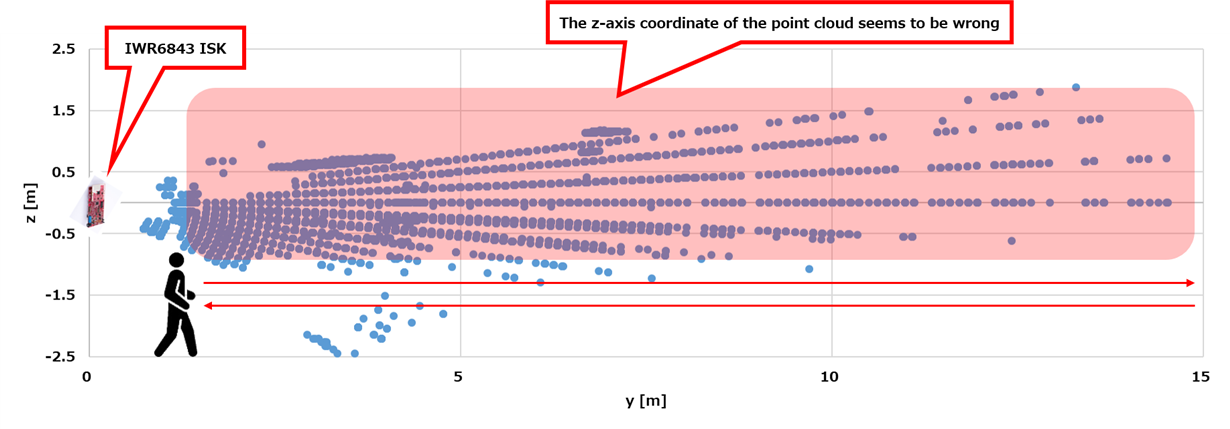- Ask a related questionWhat is a related question?A related question is a question created from another question. When the related question is created, it will be automatically linked to the original question.
This thread has been locked.
If you have a related question, please click the "Ask a related question" button in the top right corner. The newly created question will be automatically linked to this question.
Dear TechnicalSupport
I use IWR6843 ISK(ES2.0) following FW was burned.
C:\ti\mmwave_industrial_toolbox_4_2_1\labs\people_counting\68xx_3D_people_counting\prebuilt_binaries\3D_people_count_68xx_demo.bin

C:\ti\mmwave_industrial_toolbox_4_2_1\labs\long_range_people_detection\68xx_long_range_people_det\prebuilt_binaries\long_range_people_det_68xx_demo.bin
Best Regards
Hi User,
This lab supports both ISK and ODS. There is point cloud correction being done - the sensor is given an azimuth tilt (with respect to wall behind it) and an elevation tilt (with respect to the ground). By default, the sensor is assumed to be downtilted 15 degrees, so point cloud is shift 15 degrees up. If the device is not tilted down in your test, points should appear above the person, and get farther above the person as the person gets farther from the device.
You can change the downtilt setting in the gui - see the sensor position arguments on the bottom left panel.
Regards,
Justin
Dear Justin
Thank you for your reply.
Hi,
Actually, the point cloud correction happens on the device before the tracker is run. This is so that the tracker can filter points based on their location. However, you can simply reverse the transform on your collected data set.
Since the device is down-tilted 10 degrees and the setting is 15 degrees, try removing 5 degrees from each point's elevation value. There may also be some ghost points, you can try removing points from the set with low SNR.
Regards,
Justin
Dear Justin
Thank you for your reply.
Is it right to understand that the point cloud that can be acquired by TLV is already corrected?
As you say, it sholud be corrected to 5 ° upwards, so It looks as follow.
(The color of the graph represents SNR, and remove low SNR point)
Point cloud is shifted higher.

I could see the point cloud where the building exists.
But, as you say it's SNR is low. So, I also think this is ghost.
Could you tell me the location of the source code that actually performs the 15 ° correction process?
Best Regards
Hi,
You can find the correction in <Industrial_Toolbox>\labs\common\src\dpu\trackerproc_capon\src\trackerproc_3d.c, line 465. Are you setting the elevation tilt as positive or negative?
Regards,
Justin
Dear Justin
Thank you for your reply.
C:\ti\mmwave_industrial_toolbox_4_2_1\labs\people_counting\68xx_3D_people_counting\docs\3d_pplcount_user_guide.pdf
Best Regards
C:\ti\mmwave_industrial_toolbox_4_2_1\labs\people_counting\68xx_3D_people_counting\docs\3d_pplcount_user_guide.pdf
Best Regards
Hi,
Since the code is adding the elevation offset value to the point cloud data, if tilted down, the elevation offset value should be negative. This is an error in the default config.
However, the values in the device are all polar coordinates, so when adding the elevation change, you don't have to worry about the Y or Z value - as you only have Range, Azimuth, and Elevation.
Your conversion equations are correct (except I don't know what the bottom two are trying to show). However, these happen in the visualizer, not on the device.
Regards,
Justin
Dear Justin
Sorry for my late reply.
Best Regards
Hi,
You can try this modification and see if you get better results.
Regards,
Justin